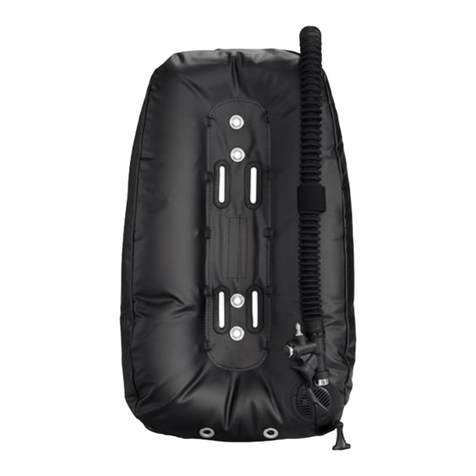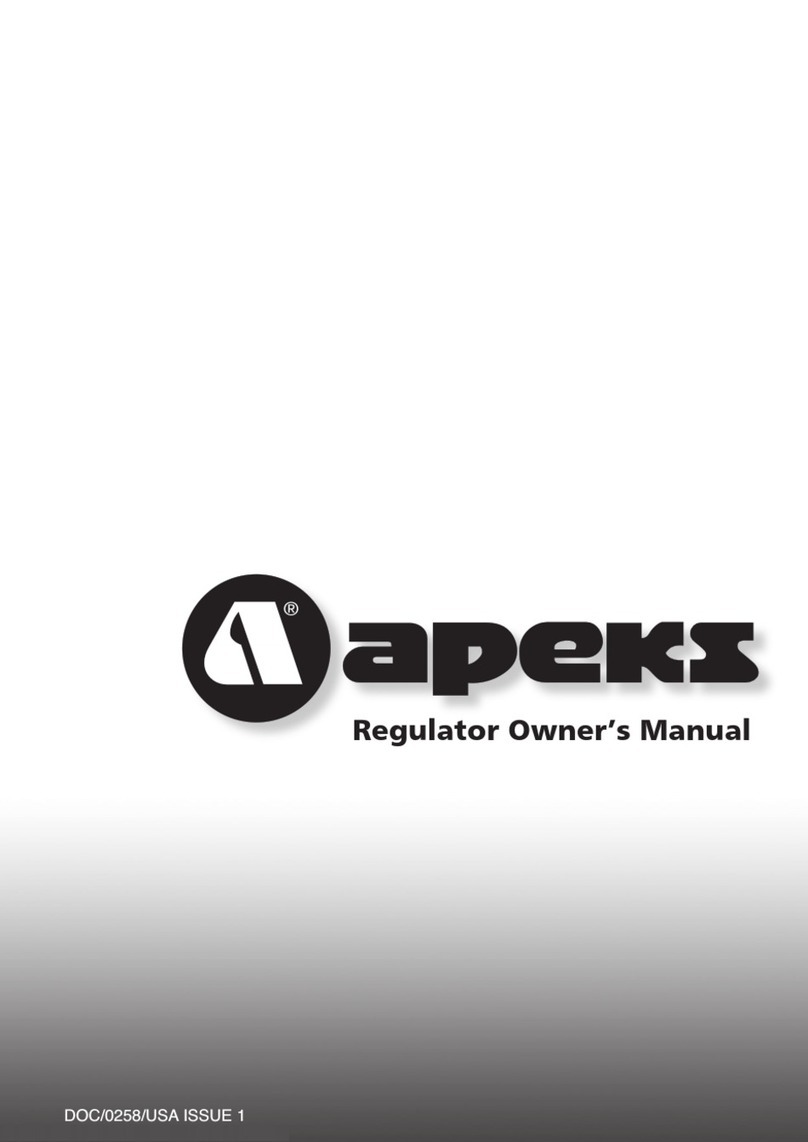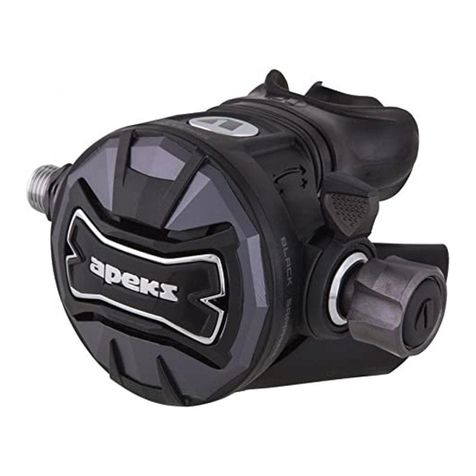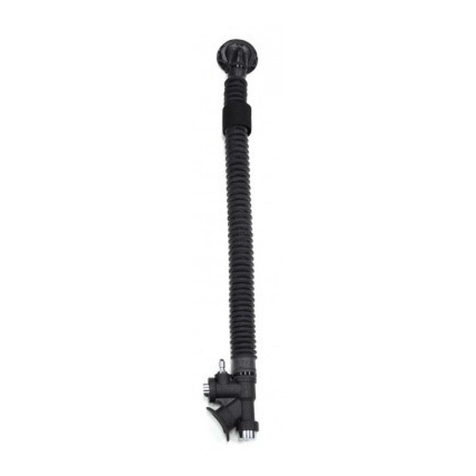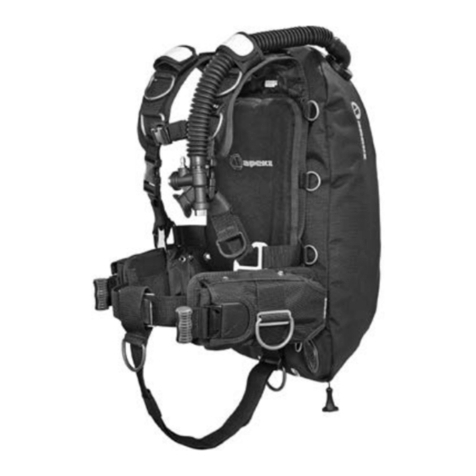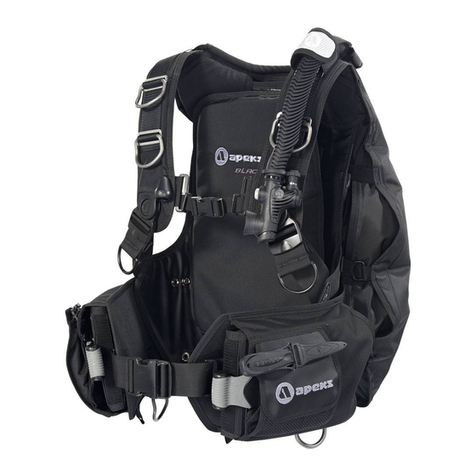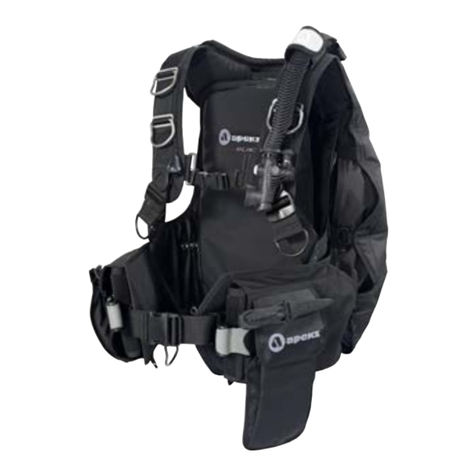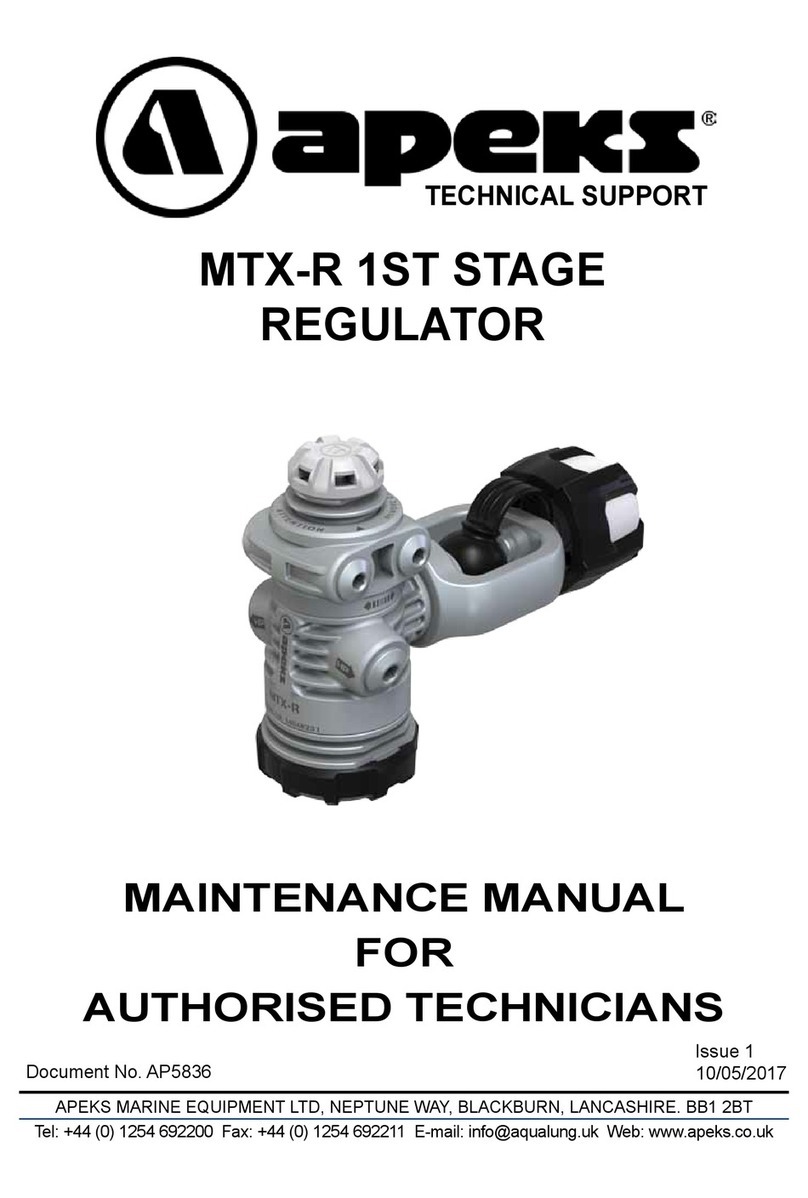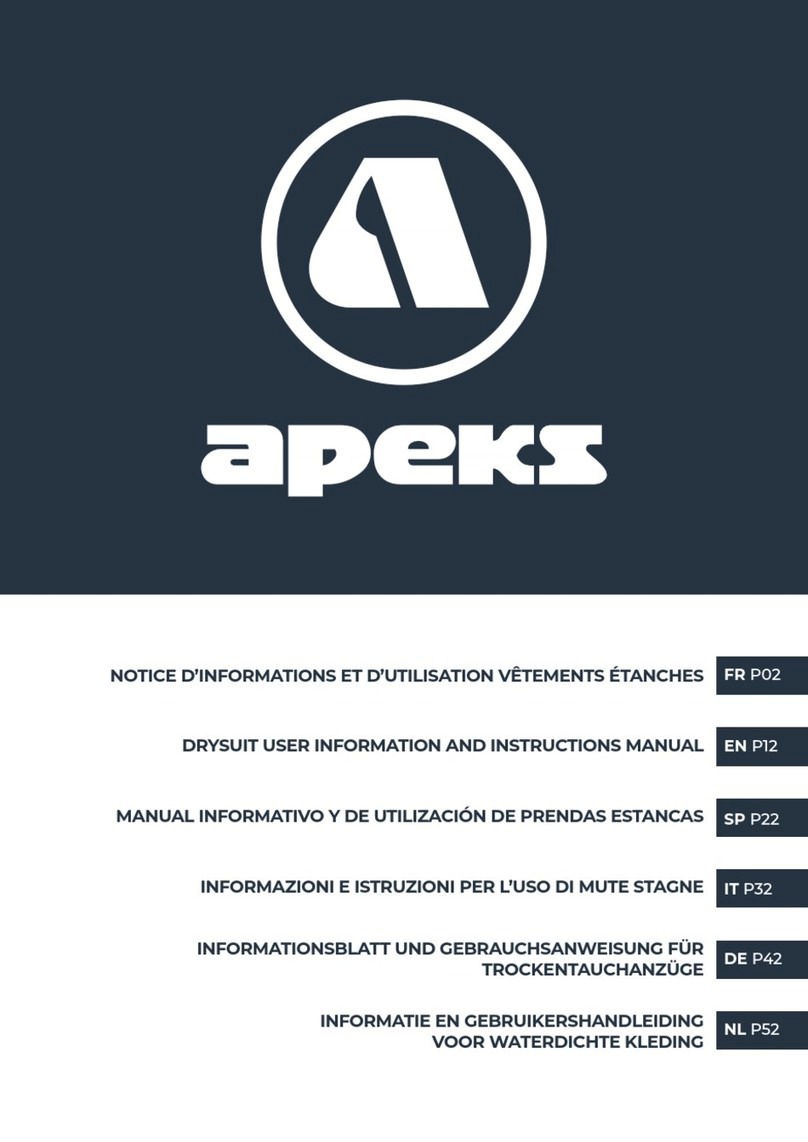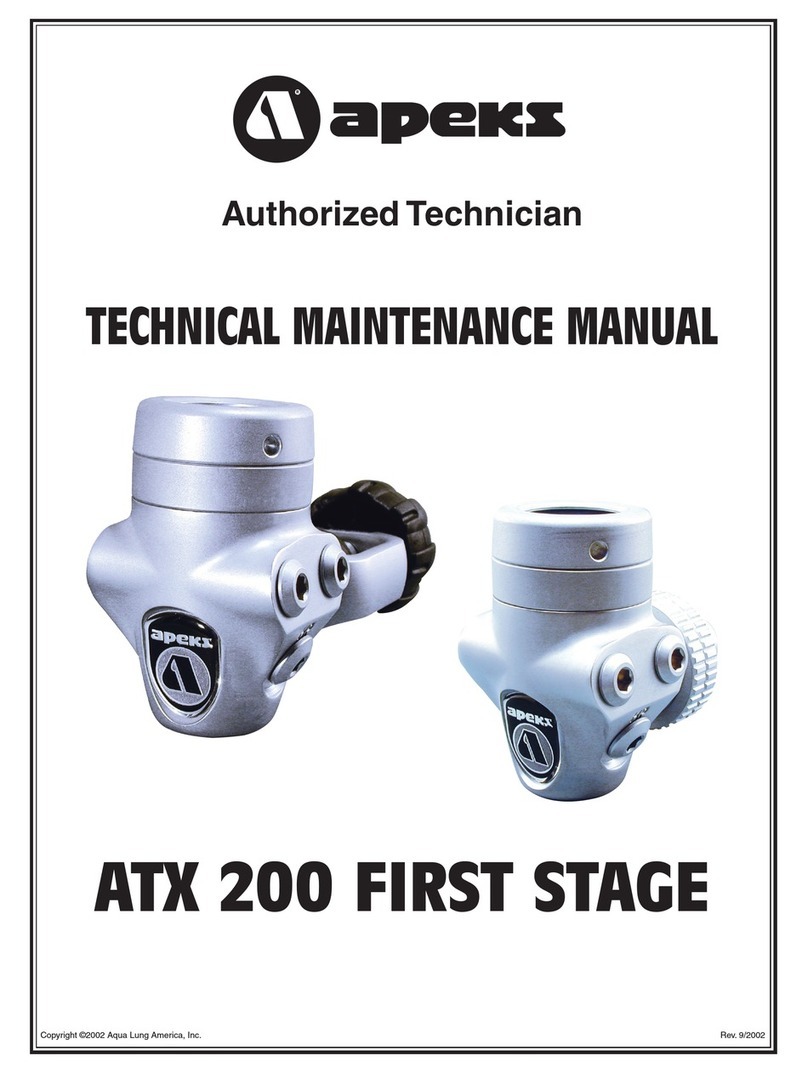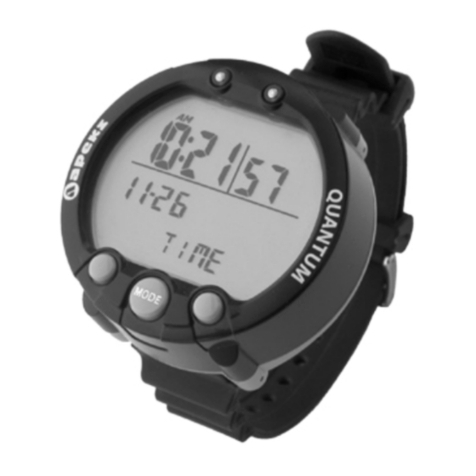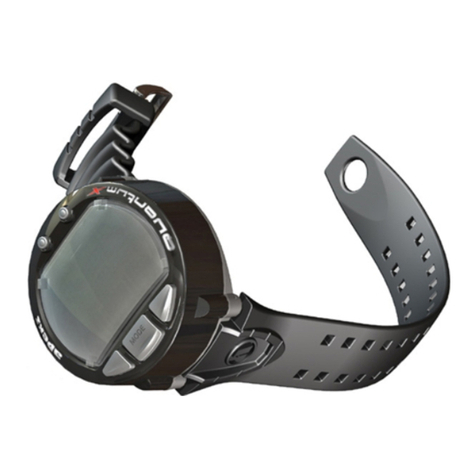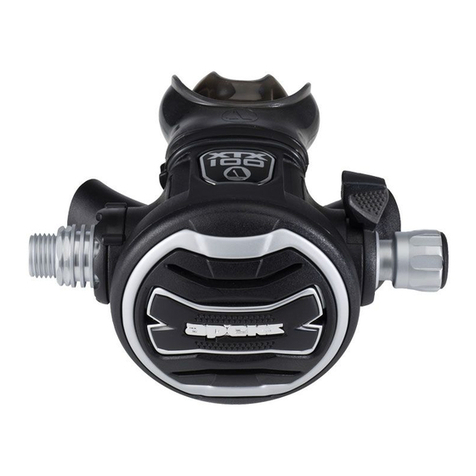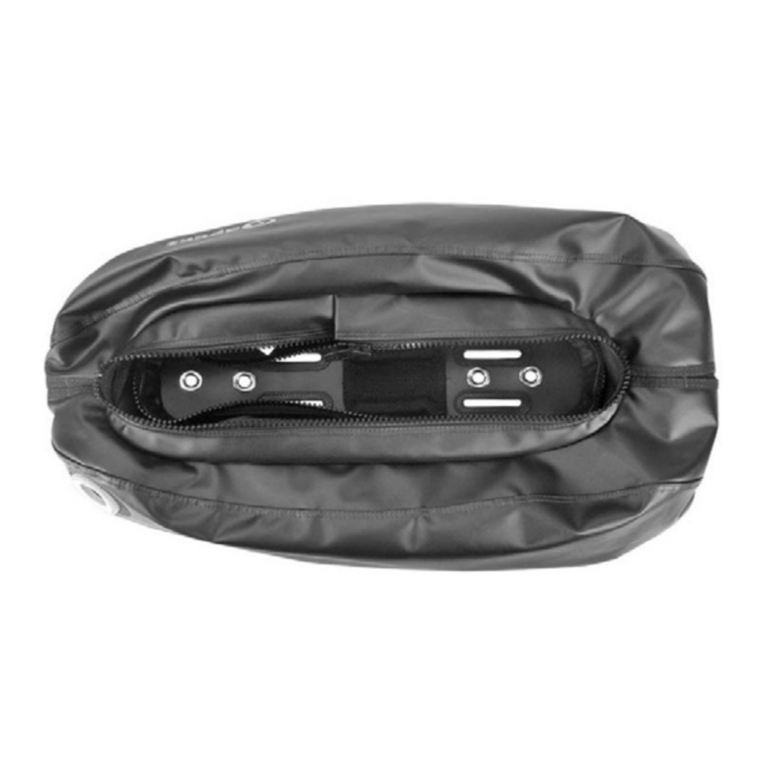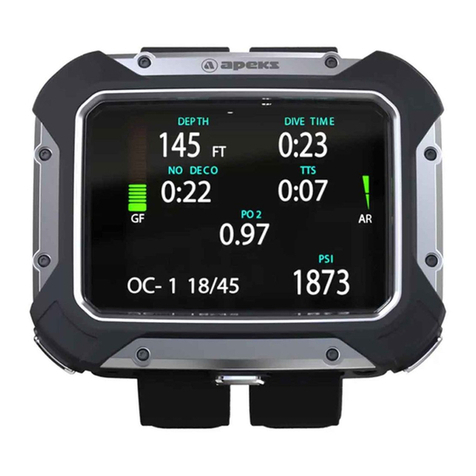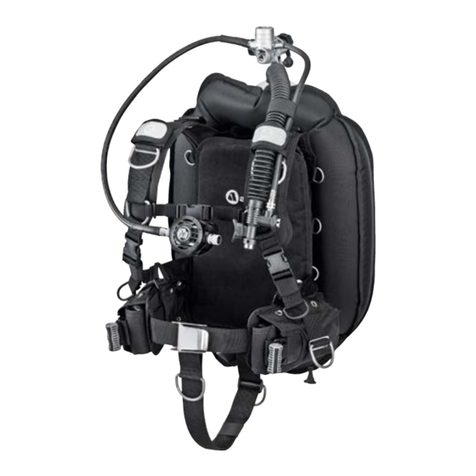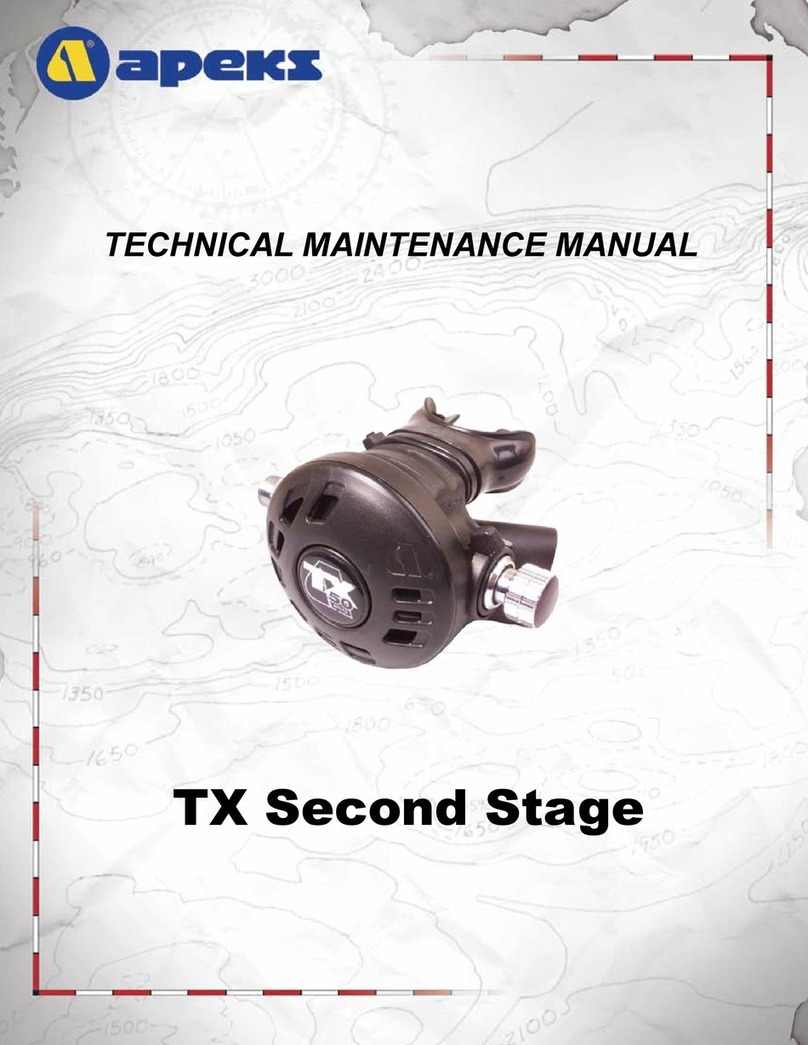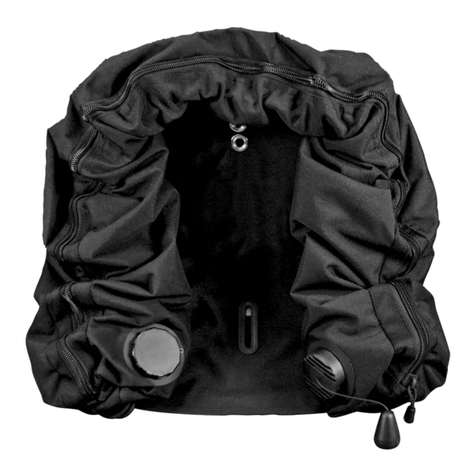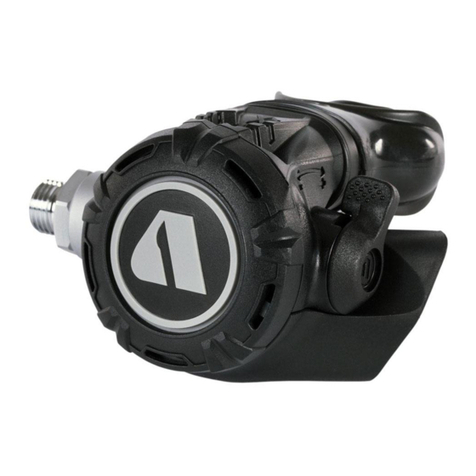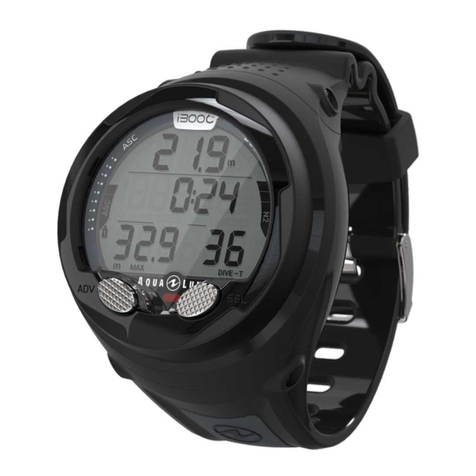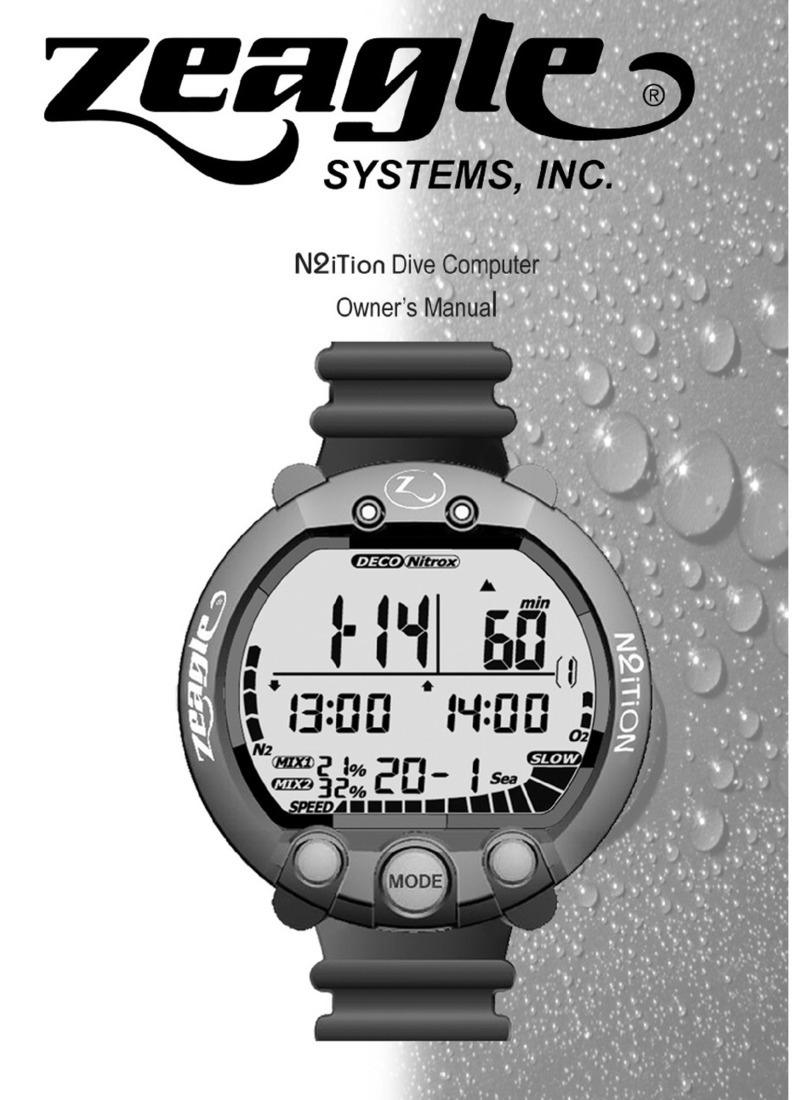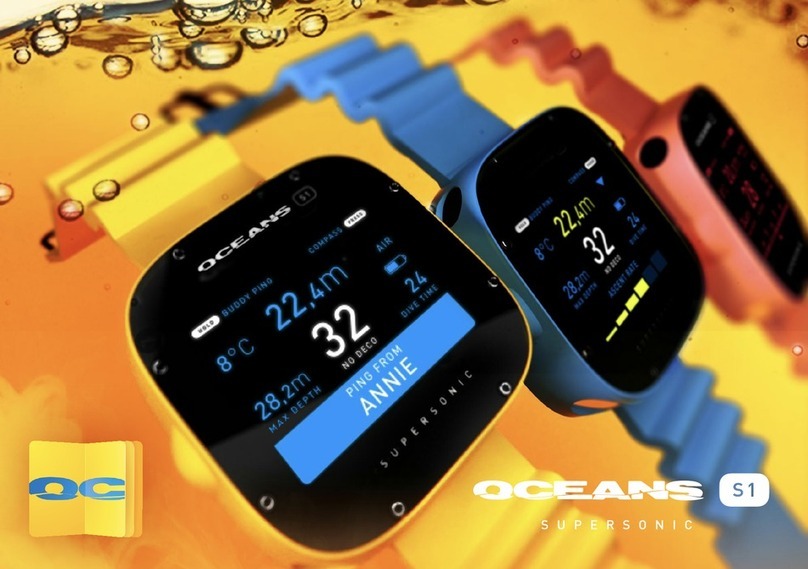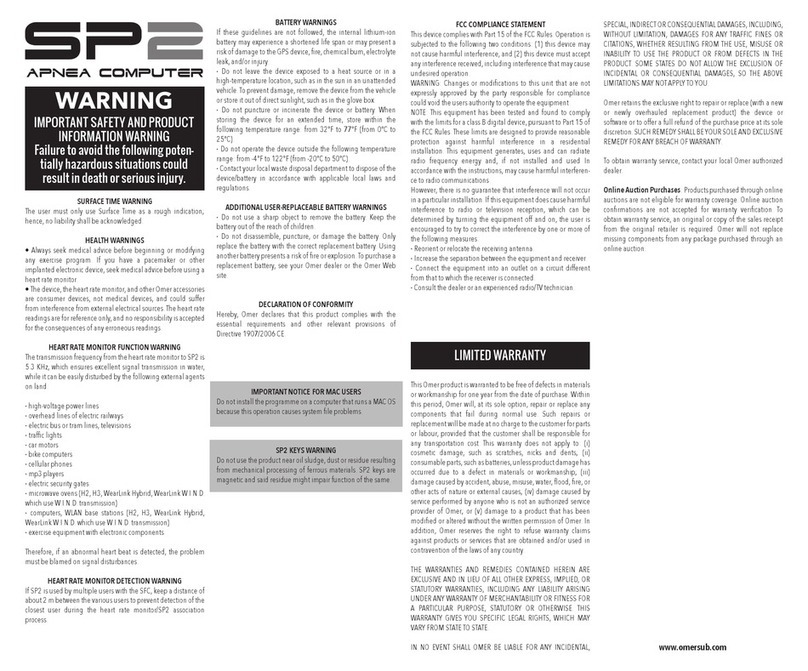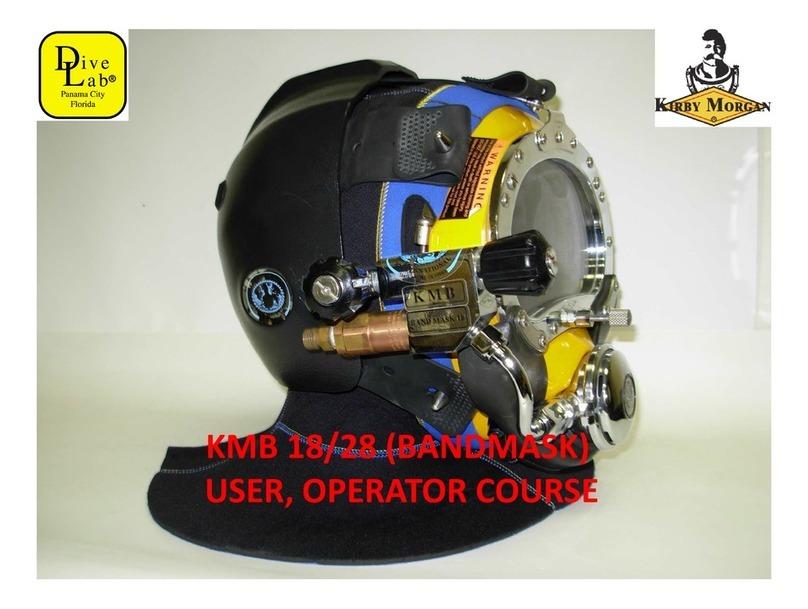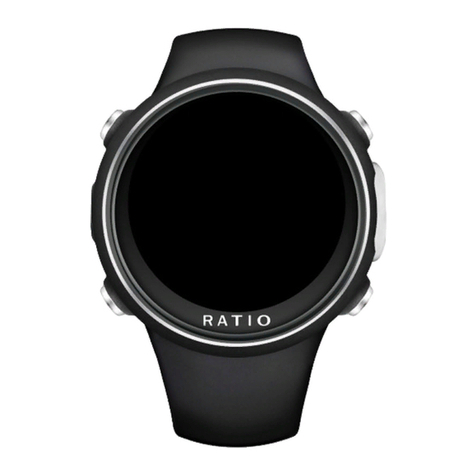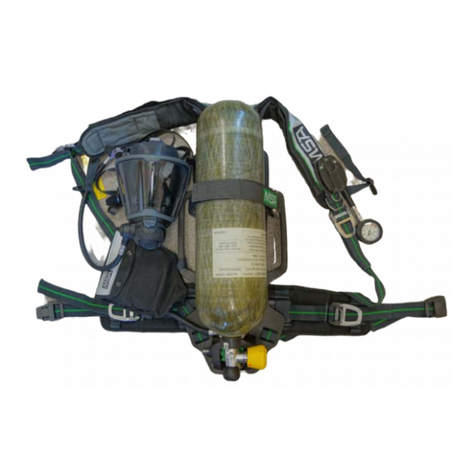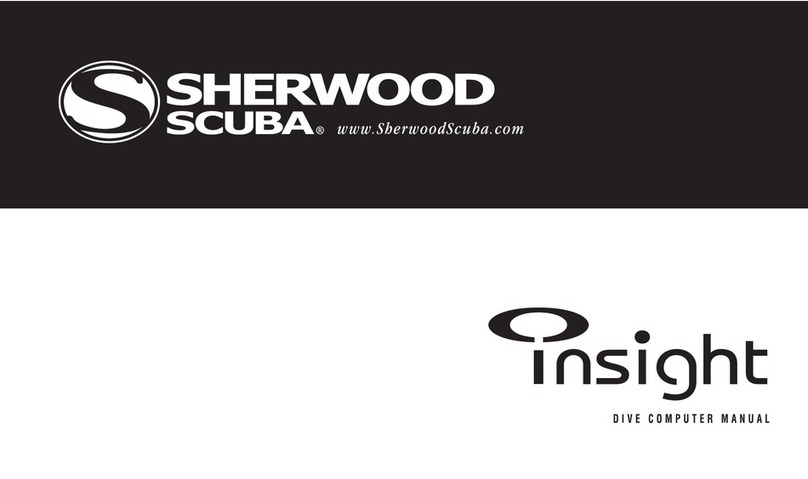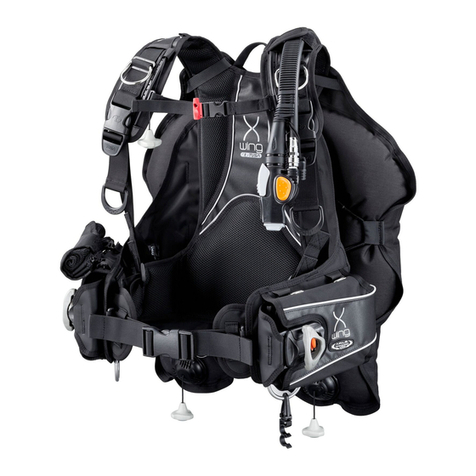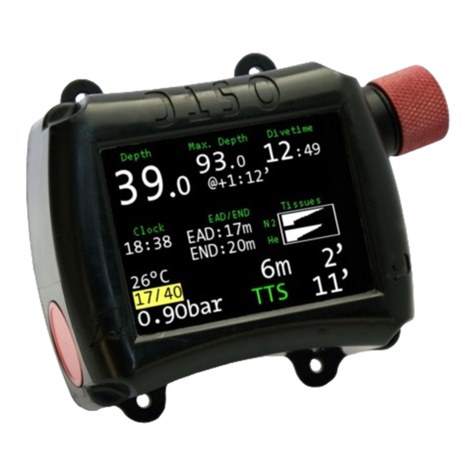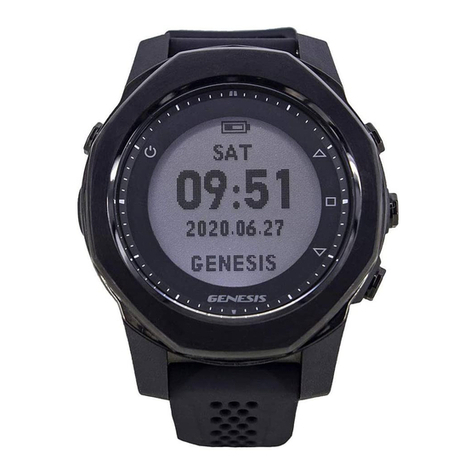4WTX Series Owner’s Manual
SAFETY INFORMATION
General Precautions & Warnings
Before using this buoyancy compensator (BC), you must receive instruction
and certication in SCUBA diving and buoyancy control from a recognized
training agency. Use of SCUBA equipment by uncertied or untrained persons
is dangerous and can result in injury or death.
Read this owner’s manual completely before attempting to use your BC, and
become familiar with it rst in a controlled environment such as a swimming
pool, in order to weight yourself properly and to become comfortable with
using its many features and adjustments.
Before every dive, perform a complete pre-dive inspection according to the
procedure prescribed in this manual, to ensure that all components are
functioning properly and no signs of damage or leaks are present. If you nd
that your BC is not functioning properly or is damaged, remove it from service
until it can be repaired by an authorized Apeks Dealer.
Your BC is not a lift bag. DO NOT use it to bring heavy objects to the surface.
Doing so may cause permanent damage to the BC, and could also result in
serious injury or death due to embolism or decompression sickness.
In an emergency such as an out of air situation or uncontrolled descent, it is
important to remove and jettison weight immediately. DO NOT depend solely
on using your BC’s power inator to lift you to the surface.
In the event of an uncontrolled, rapid ascent, it is important to immediately
begin venting air from the BC. Continue venting air to slow your ascent rate if
neutral buoyancy cannot be reestablished.
DO NOT inhale from your oral inator. The BC may contain harmful contami-
nants or gasses, which could cause suffocation or injury.
Factory prescribed service for this BC must be performed at least once
annually by a factory trained technician who is employed by an authorized
Apeks Dealer. Annual service consists of a complete overhaul of the power
inator, and a general air leak inspection of the bladder and valve connec-
tions.
Disassembly, repair, or lubrication must not be attempted by persons who are
not factory trained and authorized by Apeks. Unauthorized service will render
the warranty null and void.
This BC is designed for use with compressed air or Nitrox/EAN (enriched air
nitrox) mixtures not exceeding 40% oxygen. Any use of gas mixtures with
increased oxygen content or the addition of helium or other substances may
cause corrosion, deterioration and/or premature aging of the BC leading to
component failure of the metal and rubber parts. The component failures
could lead to a loss of buoyancy control and/or pressure integrity of the
BC resulting in injury or death. Non-standard breathing mixtures may also
present a risk of re or explosion. The use of Nitrox/EAN requires additional
training. Failure to observe this warning may result in injury or death. Use only
nitrogen/oxygen mixtures containing no more than 40% oxygen.

